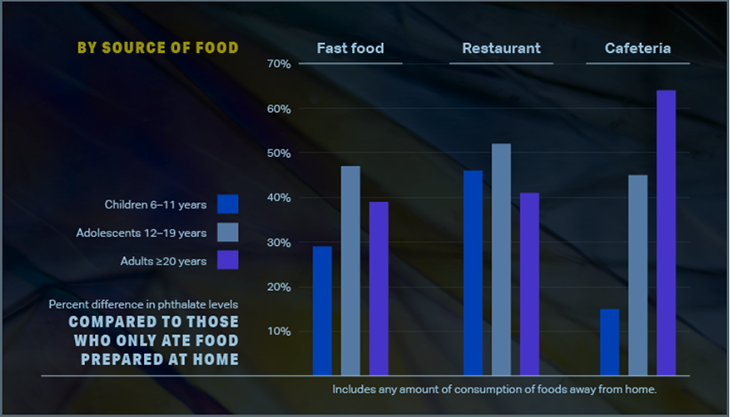Restaurant diners may ingest extra pollutants
Eating meals cooked at home was linked to lower body levels of certain hormone-meddling chemicals

Teens who downed restaurant, cafeteria or carryout food in the past day had far higher levels of certain potentially harmful chemicals in their bodies than did teens who ate only home-cooked meals.
Milkos/iStockphoto
Dining out may boost exposure to certain potentially toxic pollutants, a new study finds. Researchers measured higher levels of these phthalates (THAAL-ayts) in the bodies of people who recently dined out than in those who had been eating only foods that had been cooked at home.
Phthalates are found in many products, notably cosmetics, floor tiles and certain types of plastics. These chemicals also are used in food packaging. Many studies over the past few decades have shown phthalates can mimic the action of certain hormones. (Such pollutants are known as endocrine disruptors.) Hormones are important chemicals that help direct the activity of cells throughout the body. The effects of phthalates on hormones may alter how reproductive organs develop in infants and children. These chemicals might even impact the timing of puberty, animal studies have shown. That’s why environmental scientists recommend limiting exposures to phthalates.
Yet doing that isn’t easy. Why? Phthalates are everywhere — in the air, water and soils. They are the most common industrial pollutant in the environment. People inhale and ingest tiny quantities every day. These pollutants can even enter the body through the skin.
Ami Zota is an environmental health scientist at George Washington University in Washington, D.C. She studies how pollutants can affect health. And her team knew that food packaging can be a notable source of exposure to some phthalates.
“We all know that certain foods are more nutritious than others. But there are other ways that food choices can affect health,” says Zota — and in a potentially negative way. That’s why her team wanted to look for any trends between where people get their food and the amounts of phthalates in their bodies. Such information could be important, she says, in guiding the behaviors of people who want to limit their exposure to phthalates.
To find out where people were eating, the researchers tapped into results from a large national survey. Known as the National Health and Nutrition Examination Survey, it included data collected between 2005 and 2014 from more than 10,000 U.S. children, teens and adults. It asked each person what they had eaten in the past 24 hours. Each participant also provided a urine sample.
At least six in every 10 of these people (61 percent) reported dining out at least once in the past day. Such meals might have been purchased in a cafeteria, from a fast-food place or in a sit-down restaurant. Children and teens ate out more than adults did. Teens were more likely to eat fast food. Younger children were more likely to eat cafeteria food. Adults over age 60 were most likely to report having eaten at home only.
The researchers compared such data to levels of phthalates found in someone’s urine. People who reported eating out in the past day had 35 percent more phthalates in their urine compared with people who ate only food purchased at a grocery store. Among teens, phthalate levels in those who dined out were 55 percent higher than in teens who had eaten only food from home.
The new study’s findings are concerning, Zota’s team says. People are dining out more than ever. That could mean ever higher exposures to these pollutants.
The researchers reported their findings March 29 in the journal Environment International.
Story continues below graph.

Why do these pollutants taint food?
Certain types of foods were linked more strongly than others to phthalate levels in the body. But some foods were linked to these pollutants only when they had been purchased in a restaurant or cafeteria. Among these were cheeseburgers and sandwiches.
That could be due to food wrappers, says Laurel Schaider. She’s an environmental chemist at the Silent Spring Institute in Newton, Mass. She studies how chemicals in food packaging pollute the environment and people.
When you make a burger or sandwich at home, you probably put it on a plate and eat it right away, she notes. When cafeterias or fast-food restaurants make these foods, they tend to wrap them in paper, plastic or cardboard. Such wrappers keep oils from seeping onto your hands or lap. Those wrappers may be treated with certain chemicals, such as phthalates, to limit that oil bleed-through, Schaider explains.
For instance, one British study in the 1990s found that up to 500 micrograms of di-n-butyl phthalate (DBP) could migrate into each kilogram of food packaged in plastic wrap. Butyl benzyl phthalate (BBP) goes into many papers and wrappings designed to make contact with liquids, dry materials and fatty foods. In fact, some studies have found up to 45 milligrams of BBP in each kilogram of wrapped butter and margarine.
“This study provides pretty clear evidence that we can be exposed to phthalates through the foods that we eat,” says Schaider. But there are still many more questions to answer. “We want to know whether people with the highest levels of phthalates experience any health effects as a result of these exposures,” she says.
Future studies also could help pinpoint the biggest sources, Schaider notes. Certain types of restaurant equipment or food packaging might prove more likely to leach phthalates.
Such information may one day help policymakers design laws to reduce phthalates in food, adds Zota.
In the meantime, concerned diners can take their own steps to reduce their exposure to these potentially harmful chemicals. One way is by choosing home-cooked meals over restaurant food. “The body excretes phthalates pretty quickly,” Schaider says. As such, she explains, any change you make to your diet “can affect exposure levels right away.”







